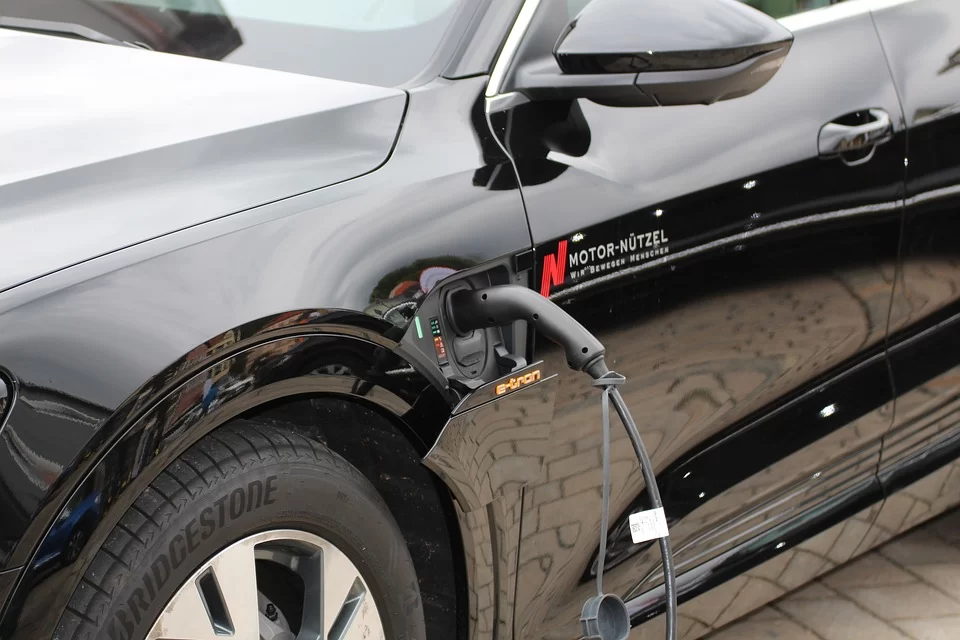
Hybrid Vehicles: Paving the Way to Sustainable Transportation
Hybrid vehicles have taken the automotive industry by storm, combining the efficiency of electric power with the reliability of traditional gasoline engines. In this article, we will delve into the intricacies of hybrid technology, explore the benefits, address common misconceptions, and peer into the future of eco-friendly transportation.
1. Introduction
1.1 What are hybrid vehicles?
Hybrid vehicles are a revolutionary blend of traditional internal combustion engines and electric propulsion systems. This combination allows for improved fuel efficiency and reduced environmental impact.
1.2 Rise in popularity
Over the past decade, hybrid vehicles have witnessed a surge in popularity, with consumers increasingly prioritizing eco-friendly alternatives to conventional cars.
1.3 Importance of eco-friendly transportation
The growing concern for environmental sustainability has heightened the importance of adopting vehicles that minimize carbon footprints and reduce reliance on fossil fuels.
2. How Do Hybrid Vehicles Work?
2.1 Combining electric and gasoline power
Hybrid vehicles utilize a dual power source – an electric motor and a gasoline engine. The system seamlessly switches between the two, optimizing fuel efficiency based on driving conditions.
2.2 Regenerative braking
One of the key features of hybrid technology is regenerative braking, where the kinetic energy generated during braking is converted into electrical energy, recharging the vehicle’s batteries.
2.3 Battery technology advancements
Recent advancements in battery technology have significantly improved the energy density and lifespan of hybrid batteries, addressing concerns about their environmental impact.
3. Types of Hybrid Vehicles
3.1 Parallel hybrids
In parallel hybrids, both the electric motor and the internal combustion engine can directly power the vehicle, providing flexibility in various driving scenarios.
3.2 Series hybrids
Series hybrids primarily rely on the electric motor, with the gasoline engine acting as a generator to recharge the batteries, offering enhanced efficiency in city driving.
3.3 Plug-in hybrids
Plug-in hybrids allow users to charge the batteries externally, providing a longer electric-only range and reducing reliance on the gasoline engine for short commutes.
3.4 Mild hybrids
Mild hybrids feature a smaller electric motor, providing assistance to the gasoline engine for improved fuel efficiency without the ability for electric-only driving.
4. Benefits of Hybrid Vehicles
4.1 Fuel efficiency
The primary advantage of hybrid vehicles is their exceptional fuel efficiency, significantly reducing the overall cost of ownership and environmental impact.
4.2 Environmental impact
Hybrid vehicles contribute to lower emissions and help mitigate climate change, making them a vital component of sustainable transportation solutions.
4.3 Government incentives
Governments worldwide offer incentives, including tax credits and rebates, to encourage the adoption of hybrid vehicles, making them financially appealing to consumers.
5. Challenges and Misconceptions
5.1 Initial cost
While hybrid vehicles may have a higher initial cost, the long-term savings from fuel efficiency and government incentives often outweigh the upfront investment.
5.2 Limited electric-only range
Advancements in battery technology have extended the electric-only range of hybrid vehicles, making them suitable for a broader range of driving scenarios.
5.3 Battery disposal concerns
Efforts are underway to address concerns related to battery disposal, with research focused on developing recycling methods and sustainable battery materials.
6. Hybrid Vehicles in the Market
6.1 Popular hybrid models
Leading automotive manufacturers offer an array of hybrid models, ranging from compact cars to SUVs, catering to diverse consumer preferences.
6.2 Automotive industry trends
The automotive industry continues to invest heavily in hybrid technology, with a significant shift towards sustainable and environmentally friendly practices.
6.3 Consumer preferences
Consumer demand for hybrid vehicles is on the rise, driven by a heightened awareness of environmental issues and a desire for more sustainable transportation options.
7. Future of Hybrid Technology
7.1 Advances in battery technology
Ongoing research and development are focused on enhancing battery technology, aiming to increase energy density, reduce costs, and further improve the sustainability of hybrid vehicles.
7.2 Integration of artificial intelligence
Artificial intelligence is playing a crucial role in optimizing hybrid vehicle performance, ensuring efficient energy management and predictive maintenance.
7.3 Role in the transition to electric vehicles
Hybrid vehicles serve as a transitional technology, bridging the gap between traditional gasoline-powered cars and fully electric vehicles, offering consumers a practical and eco-friendly option.
8. How to Maintain a Hybrid Vehicle
8.1 Regular servicing
Routine maintenance, including regular check-ups and servicing, is essential to ensure the optimal performance and longevity of hybrid vehicles.
8.2 Battery maintenance tips
Proper battery maintenance, such as avoiding extreme temperatures and ensuring regular charging, is vital to maximize the lifespan and efficiency of hybrid batteries.
8.3 Driving habits for optimal efficiency
Adopting eco-friendly driving habits, such as smooth acceleration and regenerative braking, can further enhance the fuel efficiency of hybrid vehicles.
9. Environmental Impact of Hybrid Vehicles
9.1 Reduction in greenhouse gas emissions
The widespread adoption of hybrid vehicles contributes to a significant reduction in greenhouse gas emissions, helping combat climate change.
9.2 Life cycle analysis
Life cycle analysis of hybrid vehicles demonstrates their positive environmental impact, considering factors such as manufacturing, usage, and end-of-life disposal.
9.3 Sustainable manufacturing practices
Automakers are increasingly incorporating sustainable materials and manufacturing processes in the production of hybrid vehicles, further reducing their environmental footprint.
10. Hybrid Vehicles vs. Traditional Cars
10.1 Fuel efficiency comparison
Hybrid vehicles consistently outperform traditional cars in terms of fuel efficiency, making them a cost-effective and environmentally friendly choice.
10.2 Cost of ownership
Despite a potentially higher initial cost, the long-term cost of ownership for hybrid vehicles is often lower due to fuel savings and government incentives.
10.3 Performance and driving experience
Advancements in hybrid technology have led to comparable performance and driving experiences, dispelling the notion that eco-friendly vehicles compromise on performance.
11. Advancements in Hybrid Technology
11.1 Integration of solar panels
Innovations like integrating solar panels into hybrid vehicles aim to harness renewable energy, further reducing reliance on the electrical grid.
11.2 Energy storage innovations
Ongoing research focuses on improving energy storage solutions, enhancing the overall efficiency and sustainability of hybrid vehicles.
11.3 Connected and autonomous features
The integration of connected and autonomous features in hybrid vehicles represents the convergence of cutting-edge technology and eco-friendly transportation.
12. Public Perception and Adoption
12.1 Consumer awareness
Increasing consumer awareness of environmental issues and the benefits of hybrid technology is driving greater adoption of hybrid vehicles.
12.2 Influencing factors
Factors such as rising fuel prices, government incentives, and a desire to reduce environmental impact are influencing consumers’ decisions to choose hybrid vehicles.
12.3 Changing societal attitudes
A shift in societal attitudes towards sustainability is fostering a positive outlook on hybrid vehicles, positioning them as a responsible and forward-thinking choice.
13. Government Initiatives and Regulations
13.1 Incentives for hybrid vehicle owners
Governments worldwide are implementing incentives, including tax breaks and preferential treatment, to encourage more individuals and businesses to adopt hybrid vehicles.
13.2 Emission standards
Stricter emission standards are pushing automakers to prioritize eco-friendly technologies, further accelerating the development and adoption of hybrid vehicles.
13.3 Future policies
Anticipated future policies may include more substantial incentives for hybrid and electric vehicles, contributing to a more sustainable and cleaner transportation landscape.
14. Hybrid Vehicles in the Commercial Sector
14.1 Fleet management
The commercial sector is increasingly embracing hybrid vehicles as part of their fleet management strategies, realizing the long-term benefits of reduced operational costs and environmental impact.
14.2 Corporate sustainability initiatives
Companies are integrating hybrid vehicles into their corporate sustainability initiatives, aligning their values with environmentally conscious business practices.
14.3 Impact on business operations
The adoption of hybrid vehicles in the commercial sector is not only an environmental choice but also a strategic one, positively impacting business operations and brand reputation.
15. Conclusion
15.1 Recap of hybrid vehicle benefits
Hybrid vehicles offer a compelling solution for individuals and businesses seeking eco-friendly transportation options, combining fuel efficiency, reduced emissions, and government incentives.
15.2 Role in the transition to sustainable transportation
As a transitional technology, hybrid vehicles play a crucial role in the ongoing shift towards sustainable transportation, providing a practical and accessible alternative to traditional cars.
15.3 Encouraging widespread adoption
Encouraging the widespread adoption of hybrid vehicles is essential for achieving broader environmental goals, promoting cleaner air, and reducing the overall carbon footprint of transportation.
https://projectworking0.blogspot.com/2023/11/driving-future-innovations-in-vehicle.html

